Day 4 - Thursday 9/15/05
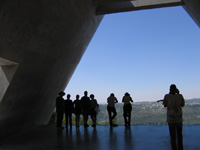
Yad Vashem
After breaking our fast, our first stop of the day was a four hour guided tour in English of the Yad Vashem Museum. Again, I quote from the brochure: "Yad Vashem is the Jewish people's memorial to the murdered Six Million and symbolizes the ongoing confrontation with the rupture engendered by the Holocaust. The new Holocaust History Museum presents the story of the Shoah from a unique Jewish perspective, emphasizing the experiences of the individual victims through original artifacts, survivor testimonies and personal possessions. It is a 180-meter long linear structure in the form of a spike that cuts through the mountain. Galleries portraying the complexity of the Jewish situation during those terrible years branch off this spike-like shaft. At the end of the Museum's historical narrative is the Hall of Names—a repository for the Pages of Testimony of millions of Holocaust victims, a memorial to those who perished. From the Hall of Names, visitors continue on to the epilogue and from there to the balcony opening to a panoramic view of Jerusalem".
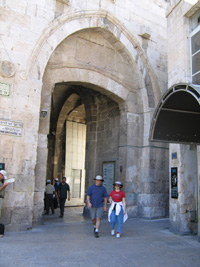
|
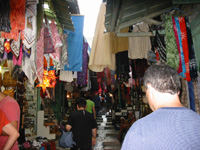
|
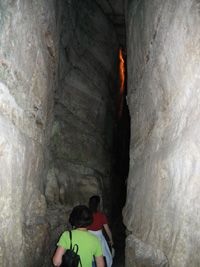
|
Jerusalem
Then it was off to Jerusalem, an ancient city sacred to three major world religions. We entered the Old City via the Jaffa Gate, over which looms the Citadel and the Tower of David, and made our way through the Armenian Quarter where we saw ruins of the old 5th century Byzantine Cardo and the stone arch of the Hurva Synagogue. In the Jewish quarter we stopped at the Kotel (Western Wall) to pay our respects and take the opportunity for some good "people watching". From there, we were privileged to be able to tour the newly opened archaeological dig north of the Western Wall where the catacombs of the ancient city under the modern city have been unearthed. The base of the Western Wall has been excavated to reveal it's entire length. We exited the tunnels in the Christian Quarter at the Via Dolorosa near the Second Station of the cross, the site of the flagellation and the crown of thorns. There were a few minutes of confusion where our armed escort was delayed, however our tour guide solved this dilemma handily by flagging down a passing pair of soldiers who were strolling down the street and asking them to accompany us back to the Jewish Quarter (John and I had felt perfectly safe until that particular sobering and disconcerting incident). Our route passed through the Muslim Quarter and the famous Souk, which is a maze of narrow stone pedestrian streets lined by small stalls selling everything from jewelry to pottery to spices and food.
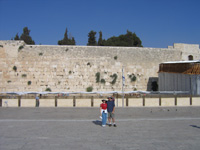
|
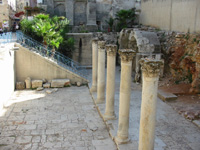
|
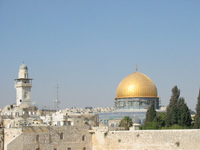
|
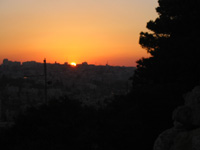
Mount Scopus
On the way home, we stopped on Mount Scopus for a view of the sun setting over the Old City of Jerusalem. It is the highest mountain in the area and is the location of Hadassah Hospital and the Hebrew University (where Oreet took a summer archaeology course in her 21st year).
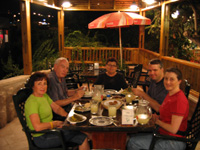
Abu Ghosh
Then it was off to Abu-Ghosh for dinner. This hillside Arab town has been in existence for centuries and has served as a stopping point on the road to Jerusalem - it's spring making it a natural location for a caravansary. The Romans built cisterns in the 1st century, and the Caliphs built a Khan there in the 7th. A Crusader Church was constructed in 1142, which is now inhabited by Benedictine monks and nuns. Our main purpose in visiting was the Lebanese restaurant featuring traditional Middle Eastern falafel. Yum!!
At this point, barely into the trip, I was already beginning to feel as if my brain was melting from the effort of keeping up a running translation of everyone's conversation for John. My Hebrew is not fluent, though it became better as the trip continued, so much of the time I did not know what people were saying either. At first I would translate one sentence for him and loose the next three sentences that were spoken while I was doing it. Then I slowly gained the ability to translate while listening, and keep the running translation moving one sentence behind the actual conversation. The one drawback of this technique was that I had to translate one word at a time in the order they were spoken, and did not have time to clean up the sentence structure to match conventional English, which sometimes made for an odd sounding conversation on the English end. By the end of the trip I was so confused between the two languages that I would translate for John and he would laughingly inform me that the phrase I had just translated had been originally spoken in English.
<<--- Yesterday |
Tomorrow --->> |
| Copyright © 2005 by Oreet Herbst and John Knott |